Mexico City Earthquake Reconnaissance – Day 3
Central Mexico Earthquake Reconnaissance – Day 3
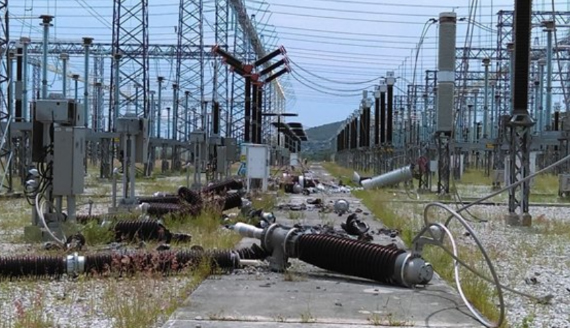
On day three we turned our attention to the performance of lifelines in Mexico City, specifically water and power. The previous days were mostly spent surveying building damage in the area of La Condesa. During that time we ran into a group from GEER (Geotechnical Extreme Events Reconnaissance) performing reconnaissance work as well. They mentioned the neighborhood of Col Del Mar in the Municipality of Tláhuac (southern Mexico City) had experienced areas of significant ground settlement with damaged buildings and buried water line damage. It appeared to them that settlement occurred in old channels or river beds that meandered through the area. We also learned there is a large wastewater treatment plant in the same area. We decided to check it out on day three.
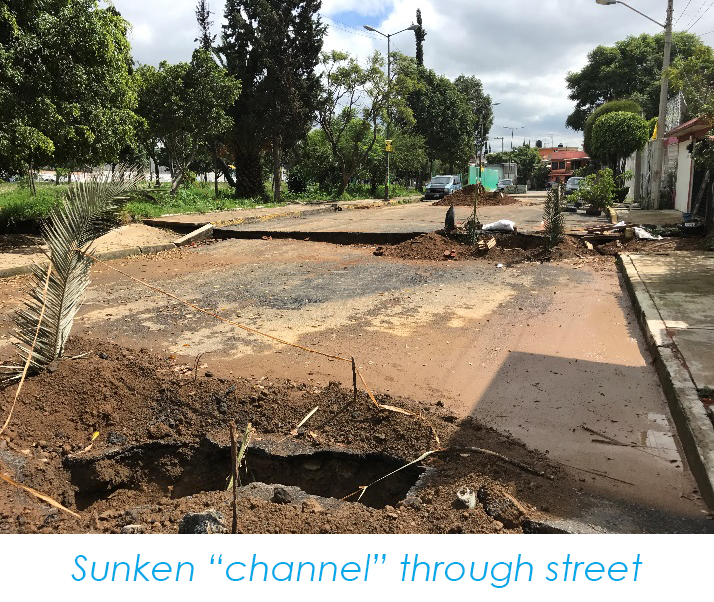
We arrived in Col Del Mar to be greeted by a myriad of closed streets that turned the area into a maze of dead ends. After getting close enough to our drop point, we didn’t have to walk very far to observe why so many streets were closed. As the GEER team reported, it appeared there were very distinct “channels” of PGD (Permanent Ground Displacement) running through the neighborhood. We noted vertical ground displacement in excess of 13” at one location. Later we would see vertical displacements closer to 24”.
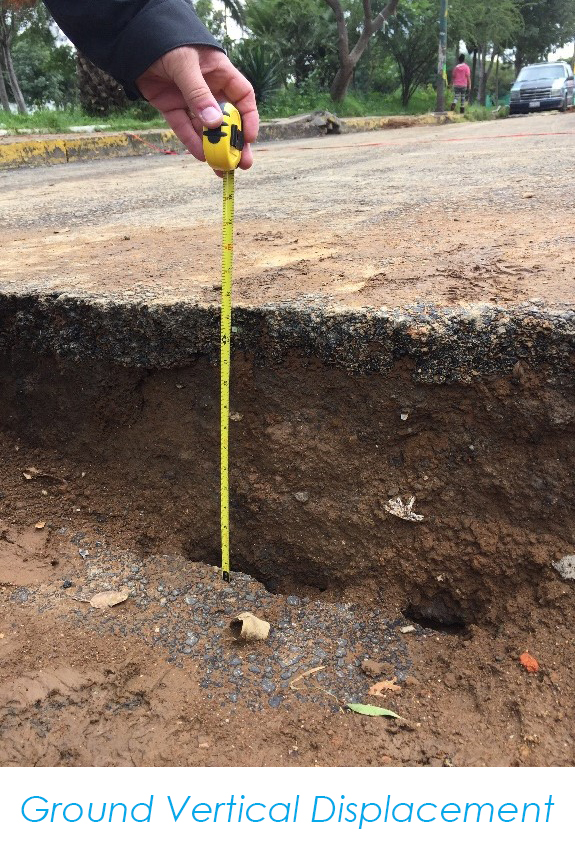
Some areas of PGD seemed to align with older buried utility trenches, while other settlement looked like wide channels or streams. According to Wikipedia, Tláhuac has been experiencing urbanization since the 1960s when it was transformed from a mostly rural area. It is highly likely the distinct areas of settlement we observed were drainage channels that were infilled with relatively loose materials in order to build roads and houses.
We learned the three municipalities experiencing the most damage to the buried water and wastewater systems were Xochimilco, Tláhuac, and Iztapalapa. Col Del Mar is right in the middle of this area, so we were hoping to see evidence of pipe damage and repair activities.
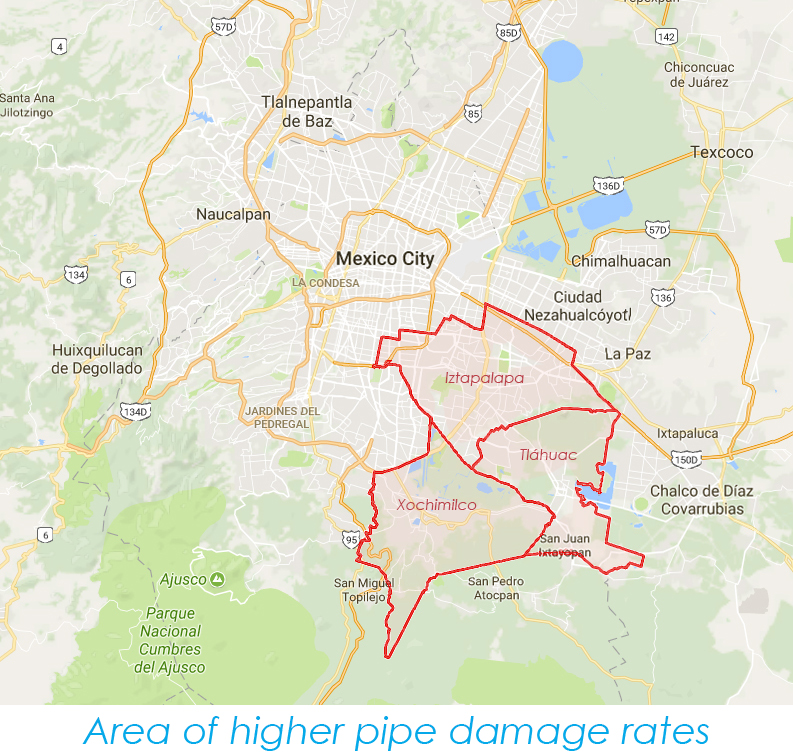
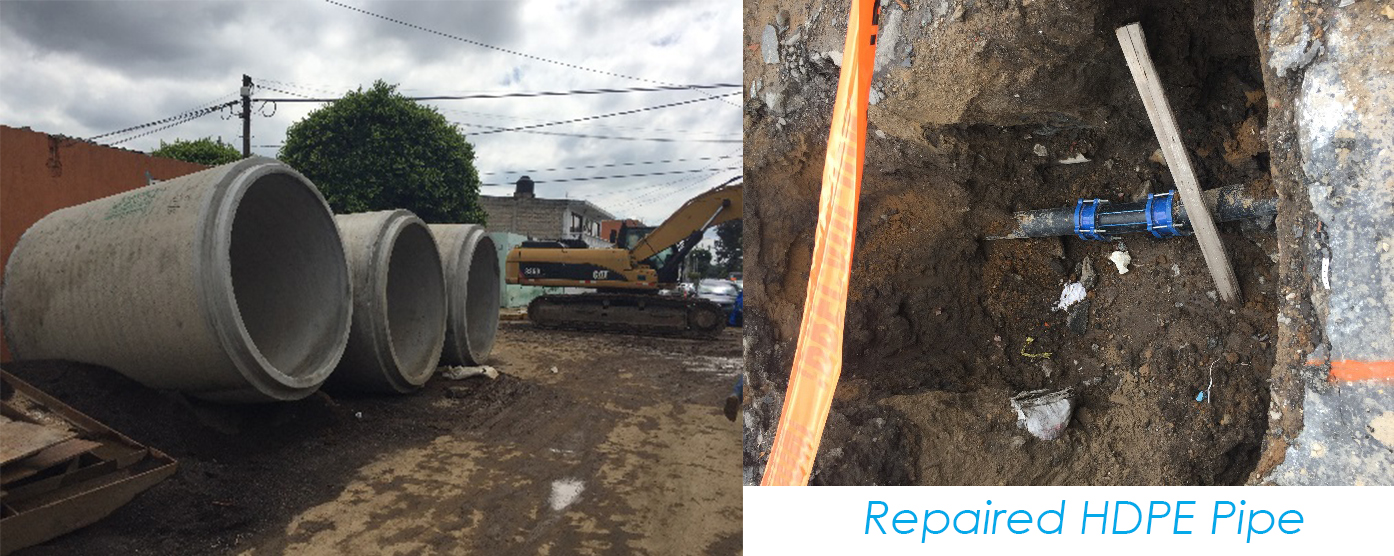
As we moved on we noticed both reinforced concrete pipe and corrugated plastic lined piping staged at various locations, we assumed it waiting to be used to repair pipe breaks. We encountered repair work for sewer piping in one street, but also saw evidence of potable water piping (6” HDPE) repair as well.
We eventually came across a long street where active repair of potable water pipes was occurring. Repair was underway on a 24” diameter asbestos concrete pipe. Repairs were already complete on the larger 48” diameter aqueduct (i.e. transmission) pipe. We were told there were a total of 10 breaks along these two lines over just about a mile stretch. We were also told that SACMEX, the government agency owner/operator of the potable water and wastewater in Mexico City, was working 24-hour shifts to restore water/sewer service. Note, as of October 4th, SACMEX reported fixing over 1,000 leaks in the water transmission and distribution network with still more to be completed. That’s 67 repairs per day, which seems like a lot considering all of the breaks need to be excavated before repairs can begin.
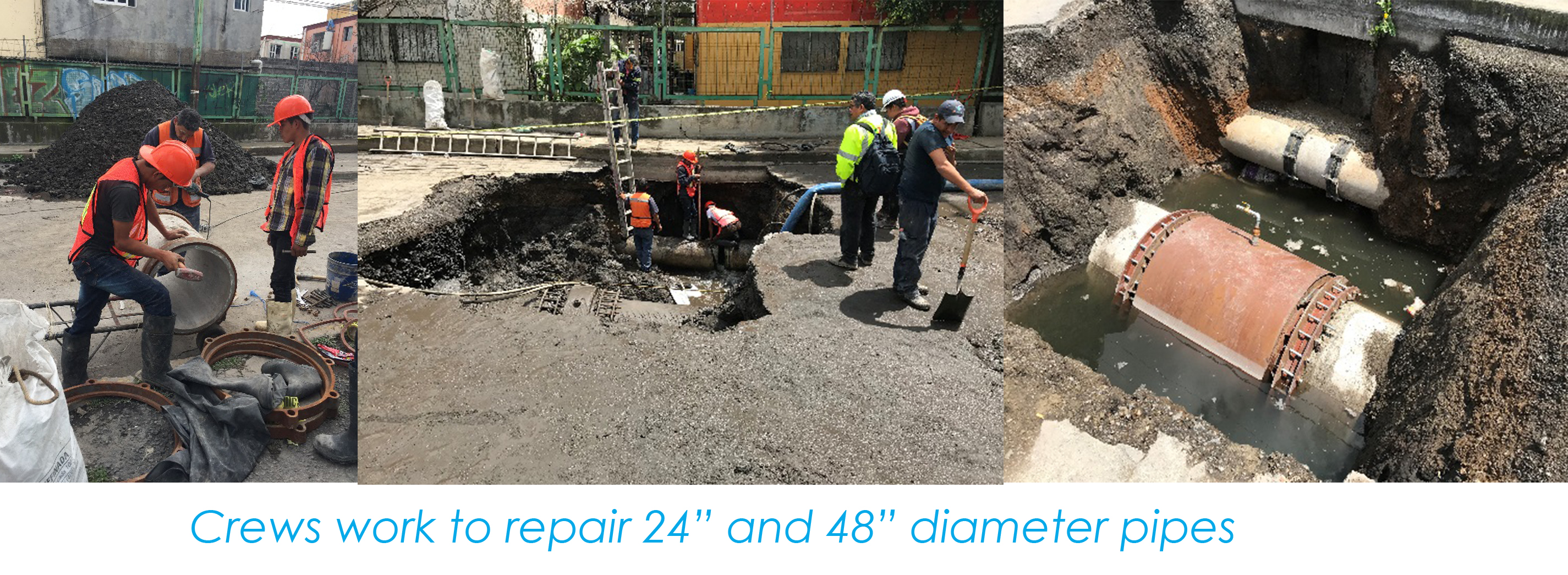
Historically, larger diameter segmented concrete pipe typically fails at joints, tees, or elbows. We were told the pipe joints at these locations pulled apart, which is a common failure mode with bell and spigot joints subject to axial tension. It appears the pipe repairs included cutting out the failed joint in preparation for installing a shorter repair segment with bolted collars.
We then traveled to the Cerro De La Estrella Wastewater Treatment Plant to inquire about damage suffered during the September 19th event. However, when we arrived we were turned away by the security guard. The response of “No damage, come back later” was similar to other buildings we visited earlier in our trip.
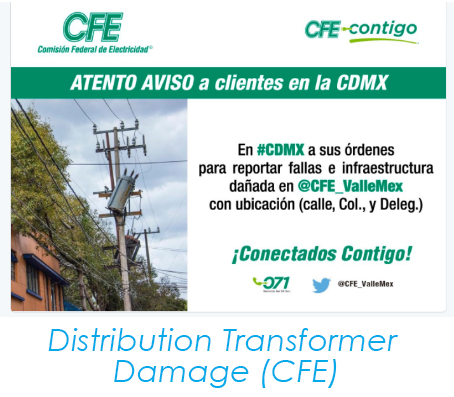
Later that day we learned about damage to the electric power system in Mexico City and further south in the State of Morelos. Damage to the power grid in Mexico City appears to have been limited to the distribution system, primarily pole mounted transformer and disconnect switches. It is uncertain if “wire slap” played any part in the loss of power. CFE (Comisión Federal de Electricidad) reported 4.1 million customers lost power in Mexico City during the earthquake. Power was restored to nearly 100% of Mexico City customers within four days. This indicates there was likely limited damage to the electric substations in Mexico City. Note that most electric substation equipment consists of high frequency (i.e. very stiff) systems and it is likely the Mexico City substations did not experience strong shaking in the high frequency domain. However, pole mounted equipment—based on the mounting height above grade—may have been subject to stronger shaking due to pole amplification of the ground motions. I could not find out if these distribution transformers experienced anchorage failures or damage due to other factors like short circuit.
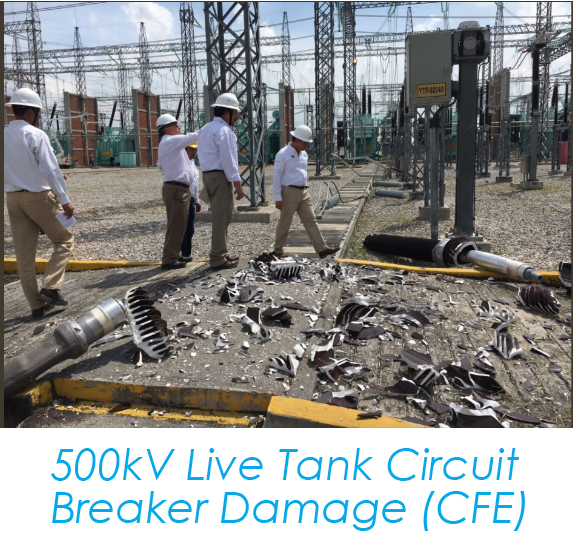
We also learned the Yautepec Substation in the State of Morelos, closer the epicenter, experienced significant damage, knocking the station out of service. The damage appears to include primarily 500kV equipment. Based on information published by CFE, the equipment that suffered damage includes power transformer bushings, surge arresters (ground mounted), instrument transformers, circuit breakers (live tank), and flexible bus. Damage to the substation control building and contents was not available. The time needed to restore the substation to fully operational was unknown, but based on the extent of damage documented, it will likely take many weeks (perhaps 6+) to replace the damaged equipment and restore this station to full operations.
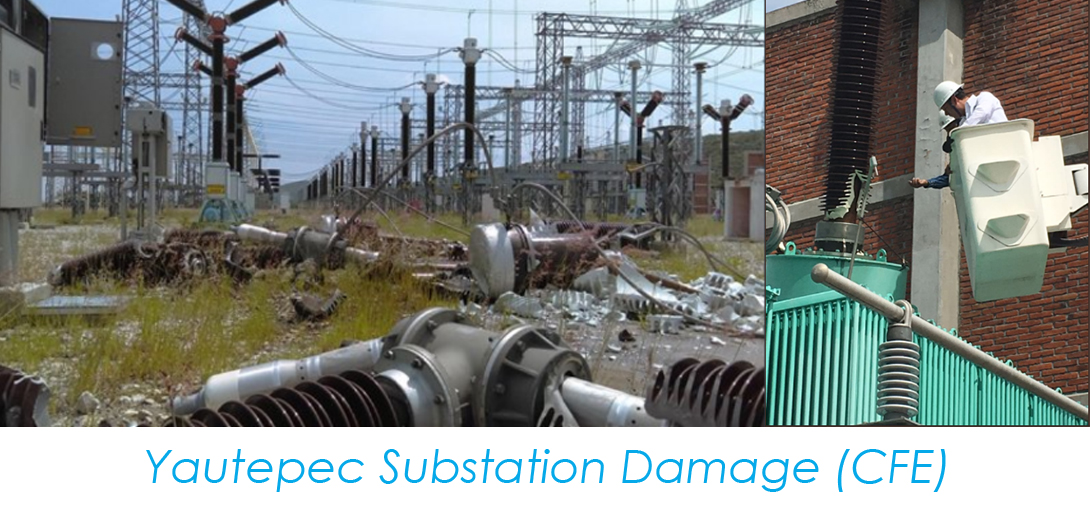
Additional damage at the CFE Oaxaca Substation (in southern Mexico) was also reported. Damage included anchorage failure of a power transformer and collapse of live tank circuit breakers. The equipment appears to be no greater than 230kV and the damage was reported to be the result of the September 7th, magnitude 8.1 event.
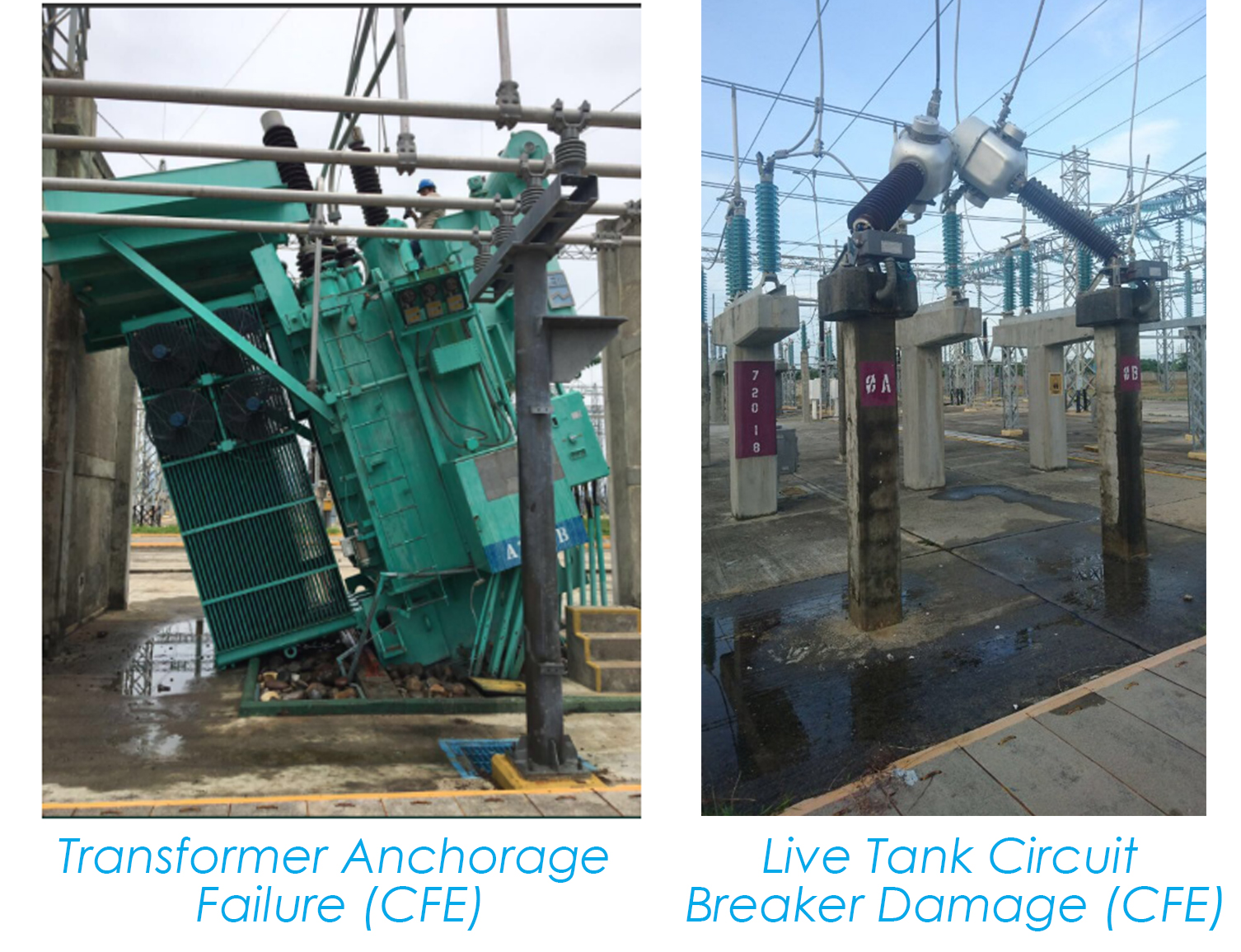

Brian Knight, P.E., S.E.
Founder and Principal of WRK Engineers, a Structural & Seismic Engineering consulting firm that is in the business of solving structural and seismic problems with adaptive solutions that protect and preserve people and assets.
Check back for more daily posts as I share my observations from Mexico City. If you have questions or comments, please go to our Contact page. I would love to get your input.
